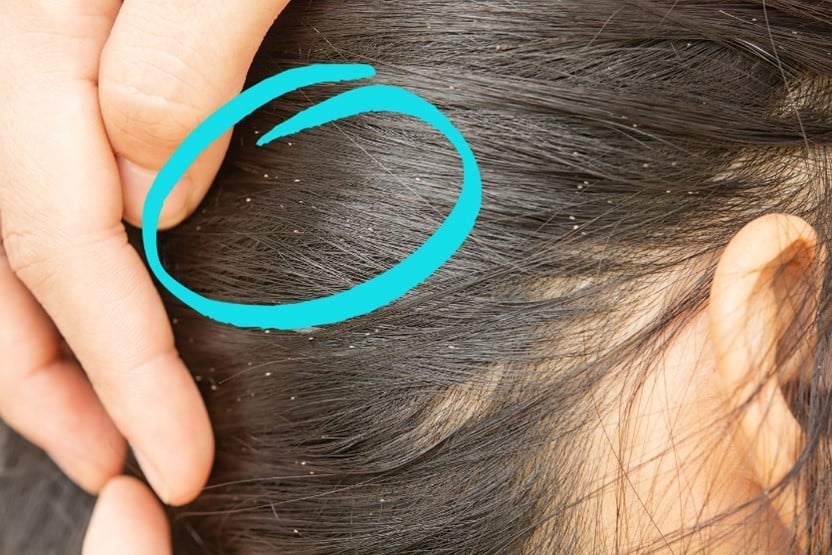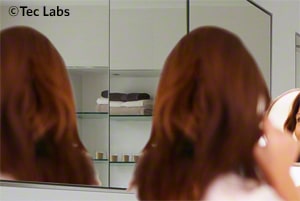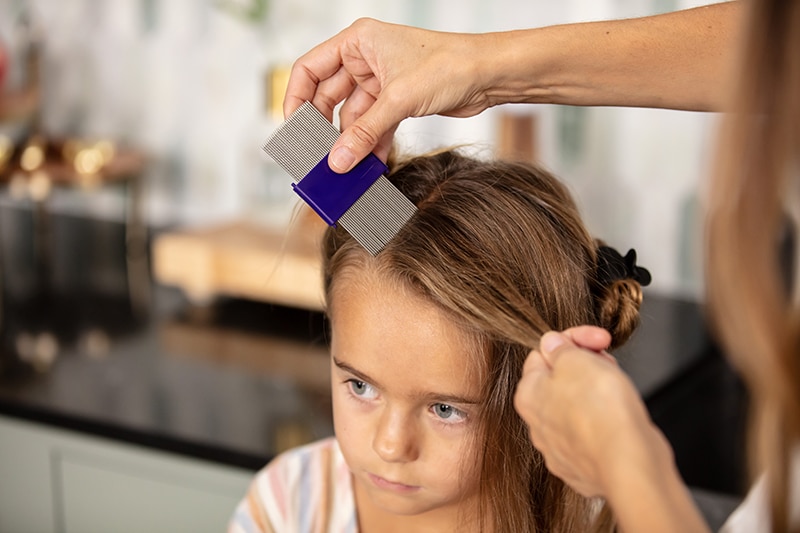Your Guide to Checking for Head Lice
Head lice infestations are a common problem that can affect anyone. You can effectively manage and treat them with the right knowledge and tools. This comprehensive guide will walk you through the process of checking for head lice, whether on yourself or others and provide tips for effective treatment.
How to Check for Head Lice on Others
- If you need to check someone else for lice, such as your child, follow these detailed steps to ensure a thorough inspection.
- First, prepare the environment by ensuring you have access to bright light, either natural or from a bright reading lamp. Have the person sit in a chair where you can easily move around them and access all areas of the scalp.
- Begin at the nape of the neck and part the hair in one-inch sections, moving upwards towards the back of the ears. Examine each section carefully, as lice may move quickly away from the light. Look for white to yellowish-brown specks the size of a poppy seed, located about a quarter inch from the scalp. These are nits, tiny eggs that are often mistaken for dandruff. They are laid with a glue-like secretion, making them difficult to dislodge.
- To confirm the presence of lice, use a nit comb, such as the NitDuo Comb. This two-sided comb has a smooth side for effective lice removal and a grooved side for extra grip on stubborn nits. Divide the hair into sections and start at the hair shaft, pulling the comb through to the ends. Apply conditioner to the hair before combing to help the comb glide more easily.
- If you find nits or lice, treat the person with an appropriate lice treatment. Recheck for lice within seven days of treatment to catch any newly hatched lice.

How to Check Yourself for Lice
If you suspect you have lice but don’t have someone to check for you, there are several steps you can follow to examine your scalp. Start by positioning two mirrors facing each other to get a clear view of your scalp. Focus on warm areas like behind your ears and the nape of your neck, as lice tend to congregate there.
Inspect your hair for lice crawling or nits attached to hair strands. Remember nits may look similar to dandruff. To differentiate, try pulling on the particles. Nits are firmly attached with a glue-like substance and won’t dislodge easily.
You can double check the presence of nits by using a nit comb. When using the lice comb, take small sections of your hair and pull the comb through from root to tip. If the comb encounters resistance, applying a conditioner or detangler can help it move more smoothly. After each pass, check the comb for lice or nits. If no lice are found but your scalp remains itchy, consult a physician to rule out other scalp conditions.

Tips for Effective Lice Treatment
Treating head lice effectively involves more than just applying a treatment. First, it is only necessary to treat every family member if you find lice in their hair. Focus treatment on those confirmed to have lice. Opt for affordable, over-the-counter, non-toxic treatments like Licefreee!. Avoid chemical pesticides if possible.
Rechecking for lice is crucial. Reexamine the scalp within seven to ten days of the initial treatment to catch any newly hatched lice. Thoroughly clean your home to prevent reinfestation. Wash bedding, clothing, and any items that may have come into contact with lice.
Essential Tools for Lice Inspection
To effectively inspect for lice, you’ll need a few essential tools. Bright light or a reading lamp is crucial for seeing lice and nits clearly on the scalp. Two mirrors help in self-examination by allowing a clear view of the scalp. The NitDuo Comb is an indispensable tool for removing lice and nits. Its smooth side effectively removes lice, while the grooved side provides extra grip on stubborn nits.
Conditioner or detangler helps the lice comb move smoothly through the hair, making the process easier and more effective. A magnifying glass can be helpful to for inspecting small particles and confirming whether they are lice or nits. Disposable gloves keep your hands clean during the inspection and treatment process, and tissue or paper towels are handy for wiping the comb and removing any lice or nits found during the inspection.

Combing hair after treating a head lice infestation can be tedious and exhausting. The NitDuo comb can effectively remove lice and nits to help you become lice-free in no time. This two-sided fine-tooth nit comb has a smooth side and a grooved side to help remove the toughest nits. You can use the nit comb on wet or dry hair. Divide sections of hair and start at the hair shaft, pulling the comb through to the ends. The smooth side of the comb has fine teeth for effective lice removal, and for stubborn nits, use the grooved side for extra grip.
To sterilize the NitDuo comb, bring water to a boil and turn off the heat. Place the comb in water for at least ten minutes, then carefully remove it.
Dealing with head lice can be stressful, but you can manage the situation effectively with these detailed steps and tips. Stay calm, use reliable treatments, and maintain a clean environment to prevent the spread and recurrence of lice.
By following this comprehensive guide, you’ll be well-equipped to handle and treat head lice, ensuring a lice-free environment for you and your loved ones

